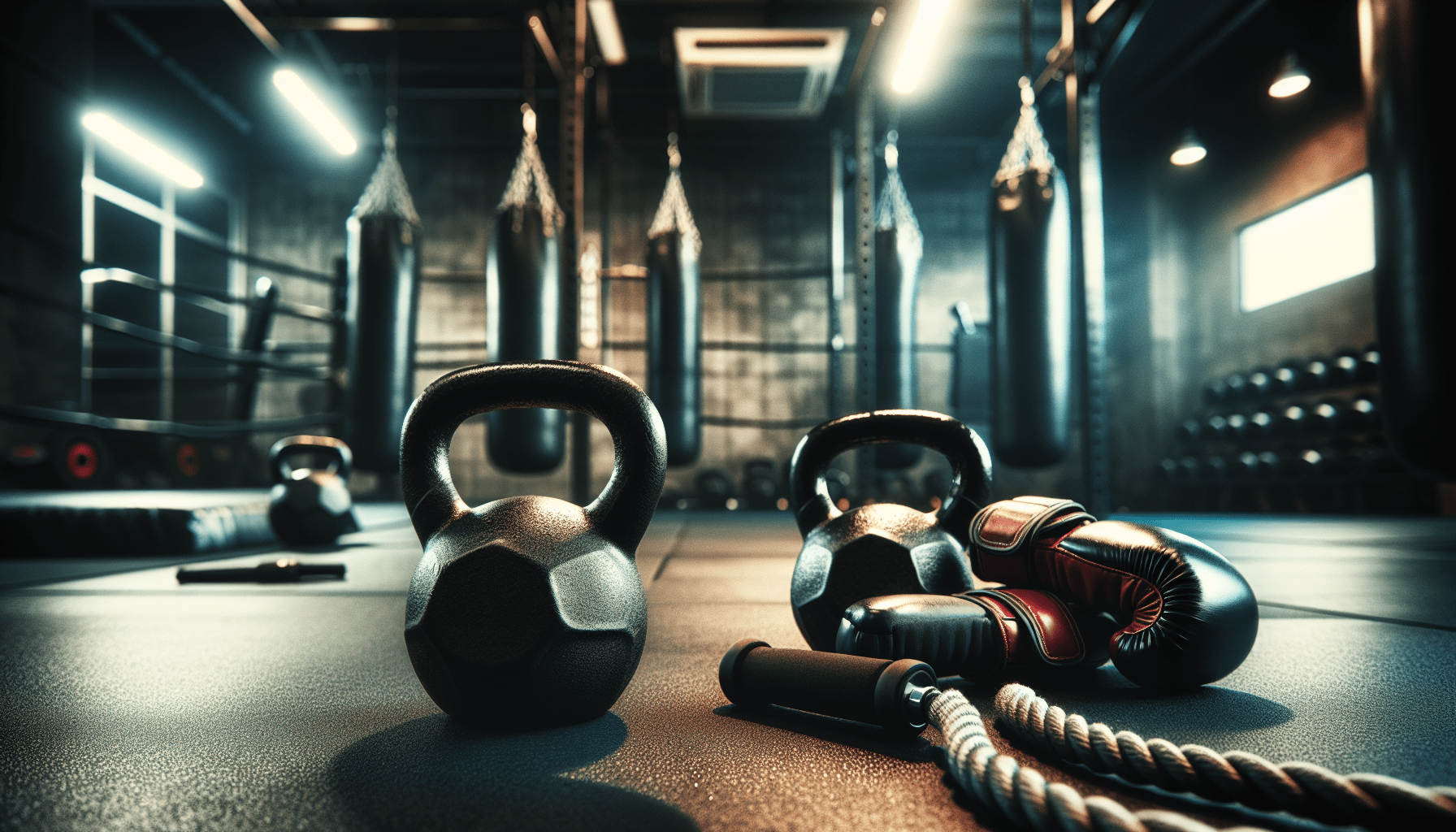In “Most Effective Cross-Training Exercises for MMA Conditioning,” you’ll discover the essential workouts that can elevate your training regimen and prepare you for the rigorous demands of mixed martial arts. This article delves into a variety of cross-training techniques designed to boost your strength, agility, and endurance, ensuring you stay ahead in the sport. By integrating these exercises into your routine, you can enhance your overall performance and maintain peak physical condition. Have you ever wondered how MMA fighters stay in top shape and are always ready to go the distance in those grueling matches? It might seem like they have some kind of superhuman endurance and strength! Actually, they owe much of their conditioning to a well-rounded, disciplined training regimen that includes various cross-training exercises. Whether you’re an aspiring MMA fighter or just want to improve your overall fitness, incorporating these exercises into your routine can help you build strength, enhance endurance, and elevate your performance.

What is Cross-Training?
Cross-training involves incorporating different types of exercises and activities into your fitness regimen to improve overall conditioning and prevent overuse injuries. For MMA fighters, cross-training is essential to ensure they are well-rounded athletes capable of handling the diverse demands of the sport, from explosive power and agility to endurance and core stability.
Why is Cross-Training Important for MMA?
MMA is a multifaceted sport that challenges your body in multiple ways. Cross-training allows you to improve various aspects of your physical condition. It offers numerous benefits that make it crucial for MMA fighters:
- Diverse Skills Development: Different exercises target different muscle groups and skills, making you a more versatile fighter.
- Injury Prevention: Cross-training can prevent overuse injuries by varying the stresses placed on the body.
- Enhanced Recovery: Engaging in different activities gives some muscle groups time to recover, reducing overall fatigue.
- Mental Break: Trying new exercises can keep training interesting and prevent mental burnout.
Categories of Cross-Training Exercises for MMA
To help you get the most out of your cross-training, we’ll break down the exercises into several key categories:
- Cardiovascular Exercises
- Strength Training
- Plyometrics
- Core Strengthening
- Flexibility and Mobility
- Mental Conditioning
Let’s delve into each category and explore the most effective exercises that can boost your MMA conditioning.
Cardiovascular Exercises
Cardio is the cornerstone for improving endurance, one of the most critical elements for MMA fighters. Here are some of the most effective forms of cardio for MMA conditioning.
Running
Benefits: Running improves overall cardiovascular fitness, boosts lung capacity, and increases leg strength.
Types of Running Workouts:
- Long-Distance Running: Helps build aerobic endurance, which is crucial for lasting through multiple rounds.
- Sprints: Improve anaerobic capacity and explosive power.
- Hill Runs: Combine the benefits of both strength and cardiovascular training.
Swimming
Benefits: Swimming is a low-impact exercise that works multiple muscle groups, providing full-body conditioning.
Swimming Drills:
- Freestyle Sprints: Increase speed and explosiveness.
- Endurance Laps: Build cardiovascular and muscular endurance.
- Kicking Drills: Strengthen the legs.
Cycling
Benefits: Cycling targets the lower body and provides a great cardiovascular workout with less impact on the joints compared to running.
Cycling Protocols:
- Long-Distance Rides: Improve aerobic endurance.
- Hill Climbing: Build lower body strength.
- Interval Training: Mimic the stop-and-go nature of MMA rounds.
Jump Rope
Benefits: Jumping rope enhances footwork, coordination, and cardiovascular fitness.
Jump Rope Techniques:
- Basic Jump: Good for beginners and warming up.
- Double Unders: Increase intensity and cardiovascular demand.
- Criss-Cross: Improve hand-eye coordination and agility.
Strength Training
Strength is fundamental to every aspect of MMA, from grappling to striking. Focusing on functional strength can give you a significant edge in the ring.
Weightlifting
Benefits: Weightlifting builds raw power and strength, essential for wrestling and powerful strikes.
Essential Weightlifting Exercises:
- Deadlifts: Target the posterior chain and improve overall power.
- Squats: Enhance leg strength and stability.
- Bench Press: Build upper body strength, particularly for pushing movements.
- Rows: Strengthen the back and improve grappling capabilities.
Kettlebell Training
Benefits: Kettlebells are excellent for functional strength and building explosive power.
Core Kettlebell Moves:
- Kettlebell Swings: Improve explosiveness and core stability.
- Turkish Get-Ups: Enhance coordination, strength, and flexibility.
- Kettlebell Snatches: Develop high power output and endurance.
Bodyweight Exercises
Benefits: Bodyweight exercises are versatile and can be performed anywhere.
Key Bodyweight Moves:
- Push-Ups: Strengthen the chest, shoulders, and triceps.
- Pull-Ups: Improve upper body and grip strength.
- Pistol Squats: Enhance single-leg strength and balance.
- Planks: Build core stability and strength.

Plyometrics
Plyometric exercises are crucial for developing explosive power, speed, and agility, all of which are vital for MMA fighters.
Box Jumps
Benefits: Box jumps improve lower body power and explosiveness, which are essential for powerful kicks and takedowns.
Clap Push-Ups
Benefits: Clap push-ups enhance upper body explosiveness, important for powerful strikes.
Medicine Ball Throws
Benefits: Medicine ball throws are excellent for improving core and upper body power.
Recommended Throws:
- Overhead Throws:
- Rotational Throws: Target the obliques and improve rotational power.
- Slam Throws: Enhance total body explosiveness.
Bounding
Benefits: Bounding improves leg power, coordination, and balance.
Bounding Drills:
- Forward Bounds: Focus on forward momentum and leg power.
- Lateral Bounds: Improve side-to-side movement and agility.
Core Strengthening
A strong core is essential for stability, balance, and generating power in MMA. It acts as the bridge between your upper and lower body, allowing for efficient energy transfer.
Planks
Benefits: Planks build isometric strength in the core, shoulders, and lower back.
Plank Variations:
- Side Planks: Target the obliques.
- Plank with Reach: Enhance core and shoulder stability.
- Plank to Push-Up: Improve dynamic core strength and upper body endurance.
Russian Twists
Benefits: Russian twists focus on oblique strength and rotational power, important for striking and grappling.
Hanging Leg Raises
Benefits: Hanging leg raises enhance lower abdominal strength and grip endurance.
Bicycle Crunches
Benefits: Bicycle crunches work both the abs and obliques, mimicking the twisting motions often used in MMA.
Flexibility and Mobility
Flexibility and mobility are crucial for injury prevention and effective movement in MMA. Neglecting this aspect can lead to reduced performance and a higher risk of injuries.
Yoga
Benefits: Yoga improves flexibility, balance, and mental focus.
Yoga Poses for MMA:
- Downward Dog: Stretches the hamstrings, calves, and shoulders.
- Pigeon Pose: Opens the hips and improves flexibility.
- Warrior Poses: Enhance leg strength and balance.
Dynamic Stretching
Benefits: Dynamic stretching improves range of motion and prepares the muscles for activity.
Dynamic Stretching Examples:
- Leg Swings: Enhance hip mobility and leg flexibility.
- Arm Circles: Improve shoulder flexibility.
- Lunge with Twist: Increase hip and spinal flexibility.
Foam Rolling
Benefits: Foam rolling aids in muscle recovery and can improve flexibility by releasing muscular tension.
Foam Rolling Areas:
- Quadriceps and Hamstrings: Target the thigh muscles.
- IT Band: Address lateral tightness.
- Back and Shoulders: Release tension in the upper body.
Mental Conditioning
Mental toughness is just as important as physical conditioning in MMA. It helps you stay focused, manage stress, and maintain high performance under pressure.
Visualization Techniques
Benefits: Visualization helps in mentally rehearsing fights, strategies, and techniques.
How to Visualize:
- Pre-Fight Visualization: Picture yourself executing techniques perfectly.
- Mental Rehearsal: Visualize overcoming challenging scenarios.
- Focus Techniques: Use positive affirmations to build confidence.
Meditation
Benefits: Meditation reduces stress, improves focus, and enhances mental resilience.
Meditation Practices:
- Mindfulness Meditation: Focus on the present moment to reduce anxiety.
- Guided Meditation: Use recorded guides to direct your mental practice.
- Breathing Exercises: Practice deep breathing to manage stress and improve focus.
Journaling
Benefits: Journaling can help you track progress, set goals, and reflect on training sessions.
How to Journal:
- Daily Logs: Record your workouts, accomplishments, and areas for improvement.
- Goal Setting: Outline short-term and long-term goals.
- Self-Reflection: Reflect on successes and challenges, noting lessons learned.
Combining Cross-Training into Your Routine
Knowing the exercises is one thing, but integrating them effectively into your training regimen is another. Here’s how you can create a balanced cross-training plan tailored to MMA conditioning:
| Day | Focus Area | Sample Exercises |
|---|---|---|
| Monday | Cardiovascular | Long-Distance Running, Jump Rope |
| Tuesday | Strength Training | Deadlifts, Pull-Ups, Push-Ups |
| Wednesday | Plyometrics | Box Jumps, Clap Push-Ups, Medicine Ball Throws |
| Thursday | Core Strengthening | Planks, Russian Twists, Hanging Leg Raises |
| Friday | Flexibility | Yoga, Dynamic Stretching, Foam Rolling |
| Saturday | Mixed Drills | HIIT (High-Intensity Interval Training), Sparring Sessions |
| Sunday | Active Recovery | Light Cycling, Meditation, Visualization, Foam Rolling |
Tips for Success
- Variety: Mix up your routine to keep it interesting and target different muscle groups.
- Consistency: Regular training is key to building and maintaining conditioning.
- Listening to Your Body: Rest when needed to avoid over-training and injuries.
- Balance: Ensure you’re giving equal focus to all areas, from strength and cardio to flexibility and mental conditioning.
Conclusion
Cross-training offers a plethora of benefits that are indispensable for MMA athletes. The varied workouts ensure you develop a well-rounded skillset, improve overall conditioning, and reduce the risk of injury. Whether you’re stepping into the ring or just aiming to elevate your fitness game, incorporating these cross-training exercises will undoubtedly give you a competitive edge. So, lace up those running shoes, grab those kettlebells, or roll out that yoga mat—it’s time to take your training to the next level!

